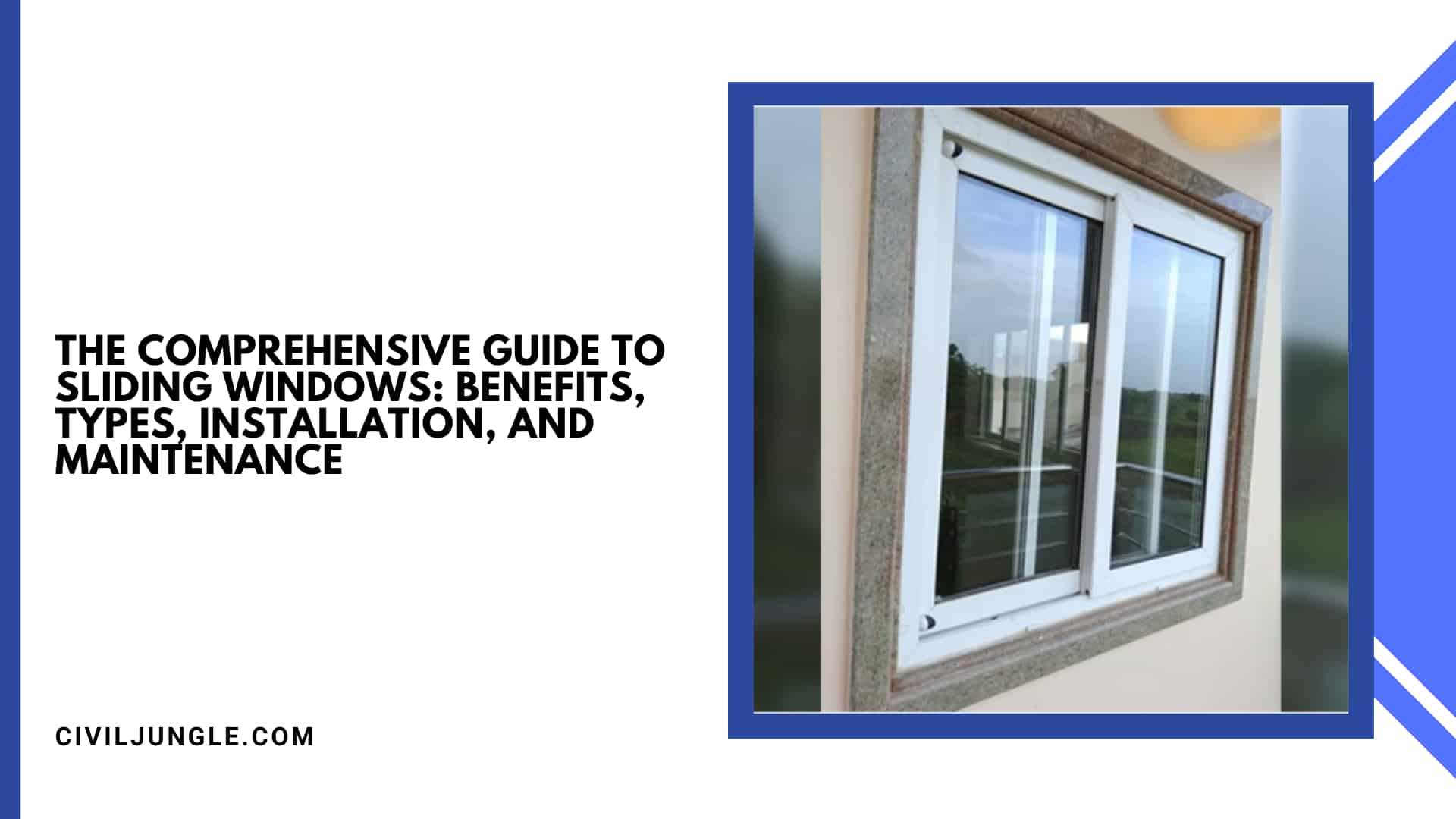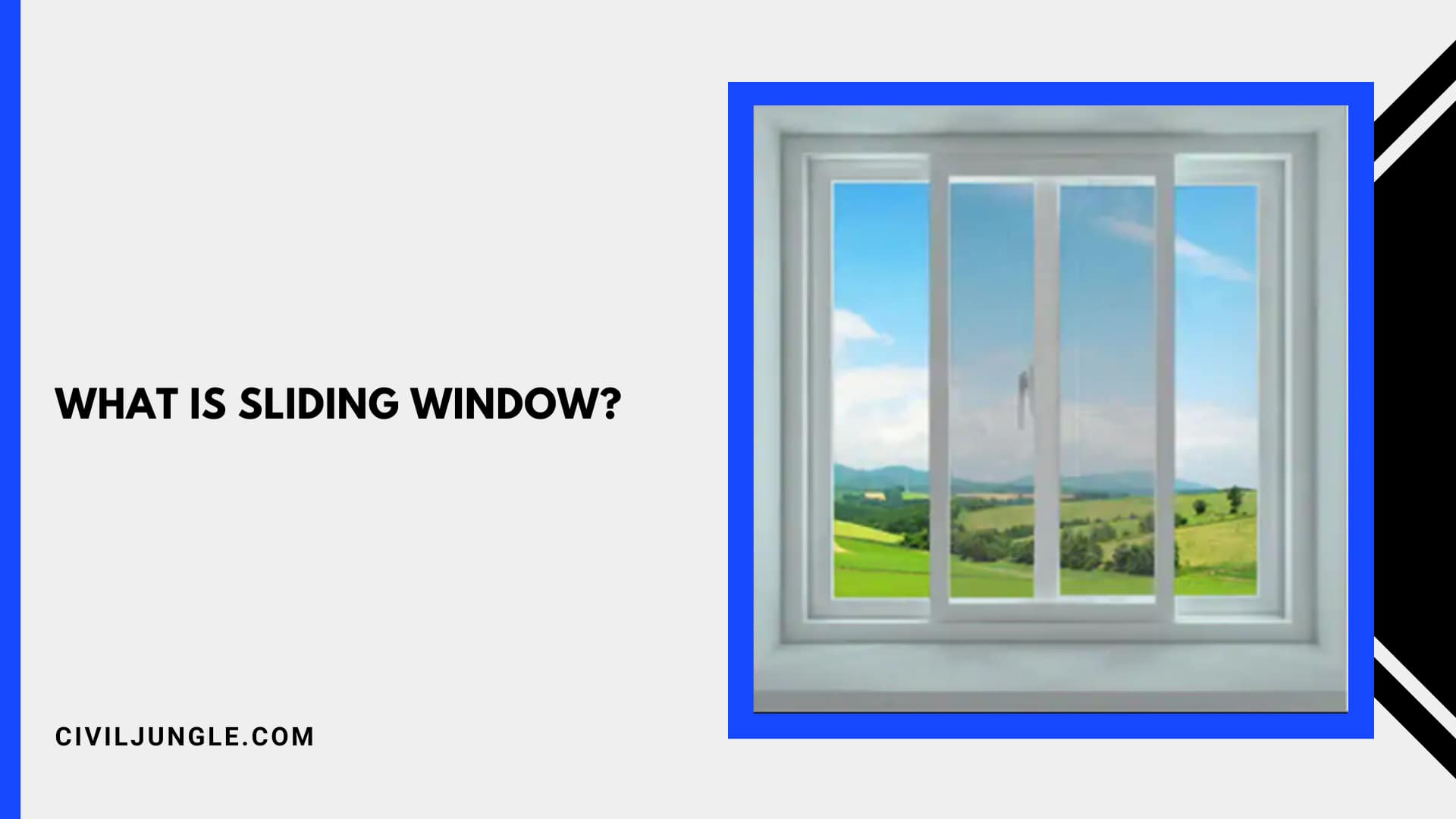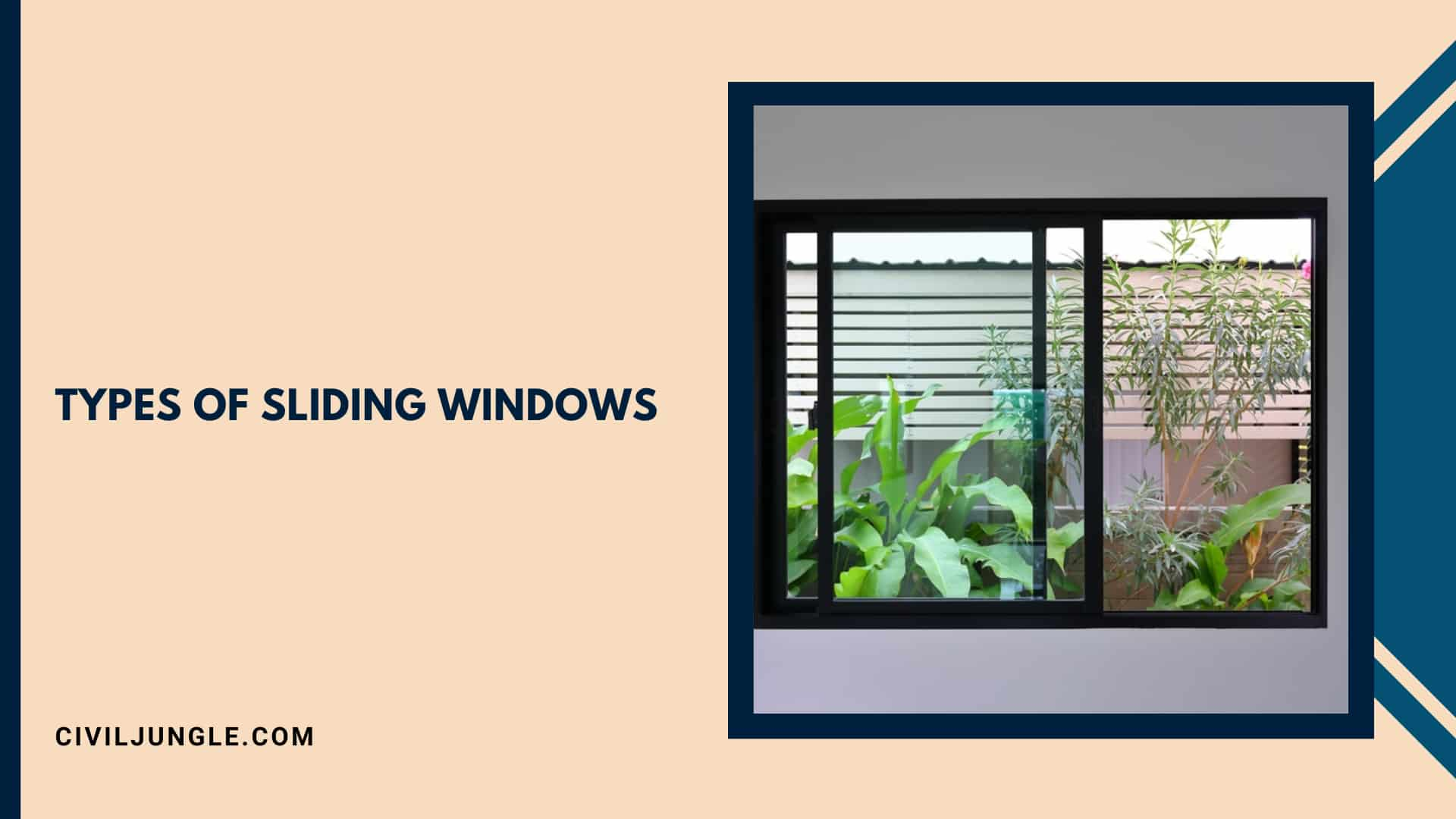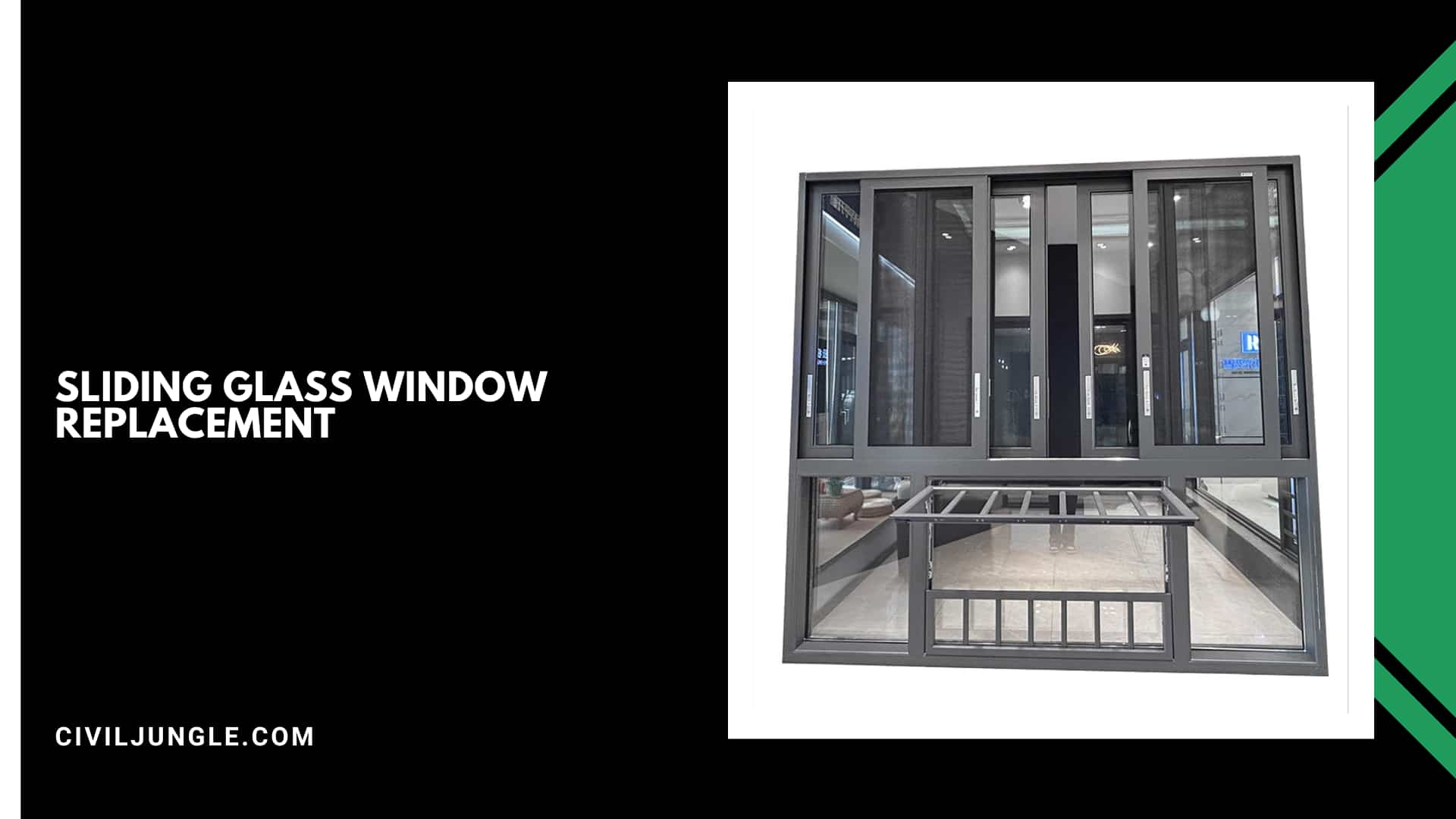Introduction of Sliding Windows
Important Point
It is easier to open and close a strategically oriented small window to capture current winds. This window plays a major part in the home’s natural ventilation. Such windows are helpful in drastically reducing summer air conditioning bills.
A similar window is a sliding window, also called “slider windows”. Sliding windows are very useful to help bring fresh air to freshness. The sliding window can provide more natural light at home.
What Is Sliding Window?
The sliding window is a set of glass panes that can open horizontally from one side to the other. No additional space is needed to scroll and operate on the track.
The sliding window can provide smooth and controlled access to fresh air and light where the porch, a tight walkway, or anywhere can be installed outside. This can provide excellent energy efficiency when the window is closed.
Sliding contemporary and modern style windows has clean lines and attractive designs. They contain large panels of unpaid glass to fit horizontal areas on the wall. These windows offer a sophisticated and timeless look with grills that can be neatly combined with more traditional homes.
This window is also called slider window, gliding window, horizontal sliding window, or sliding sash window.
Types of Sliding Windows
1. Horizontal Sliding Windows
The horizontal slider window can be opened on the left or right side of the sash on the track. It is easier to open and close a sliding window than any crank-style window.
The horizontal slider window is popular in contemporary-style homes. The window also satisfies the need to get out of the room. The horizontal sliding window often has more than two panels that provide more space for ventilation.
2. Vertical Sliding Windows
A vertical sliding sash window means nothing but a double-hung window. Some call it a vertical sliding window while some call it a double-hung sliding window.
Vertical sliding windows usually have only two sliding panels but in some cases, there may be more than two glass panels while double-hung sliding windows have only two panels.
Also Read: All You Need to Know About Sliding Windows: Types, Installation, Replacement, and Pros & Cons
Sliding Windows Sizes
The size of the standard horizontal sliding window is 36-inch, 48-inch, 60-inch, 72-inch, and 84-inch. The standard vertical sliding window is 24 inches, 36 inches, 48 inches, and 60 inches long.
Sliding Window Installation
The window needs to be installed properly to get the best out of it. Sliding windows should not be installed as a DIY project. It is advisable to seek the help of a professional to install windows.
Here are some things to keep in mind when installing sliding window.
- Expansion or spray-in foam products should not be used. If you use one of them, be careful to keep the jam straight so that the window operation is not interrupted.
- If we use external items of brick or stone, a distance of 1/8 “should be kept from the window to allow the expansion of brick and mortar.
- Baker Road and Silicon Caulk should be used to seal the gap. Brick washing should not be used after installing the window as doing so cancel the window warranty.
- The window should not be pants and the window should not be kept at a place where the temperature exceeds 140 ° F as doing so can cancel the window warranty.
Sliding Window Price
The average cost of installing a single sliding window ranges from $ 450 to $ 1000. Installing double aluminum sliding windows with double-pane glass can cost about $ 700.
A small single-pen vinyl sliding window of the 36 “x 24” size can be installed at a cost of $ 400. The large triple-pan 48 “x 60” steel sliding window can be found for $ 1,750. This window depends on the total cost size, frame material, and additional features for installation.
Also Read: Understanding Lantern Windows: Types, Benefits, and Installation Considerations
Sliding Window Replacement
We will first look at the process of sliding window glass replacement.
Sliding Glass Window Replacement
1. Clean Broken Glass
A broom and dustpan should be used to collect large pieces of broken glass. A piece of rag should be used to avoid injuring the hand while lifting this broken glass. A vacuum cleaner should be used for small pieces of glass.
2. Check for Damage in the Casement
The entire casement should be checked to determine if there is any other damage. A screwdriver is required to remove the casement if the slider is tilted or otherwise damaged. A hammer can be used to straighten the slider. Appropriate force must be applied to the slider as excessive force can be responsible for dents.
3. Remove the Glass
The broken glass needs to be replaced. The entire glass can be removed by removing all screws located at the top as well as at the bottom of the frame. Gradually remove the screws one by one and separate the frame so that the glass does not fall down and is not damaged in any way. Gaskets should be used to check for any signs of damage.
4. Replace the Glass
A screwdriver should be used to remove the window sash of the frame. The glass should be carefully slid and re-secured with screws. Some windows require caulk to completely seal the frame. A utility knife should be used to remove the existing caulk.
Now we will see the process of changing the sliding window sash.
Sliding Window Sash Replacement
Casement window repair can be done in many different ways. The scarf may be pulled loose due to age or poor installation.
A pull is a handle that is usually attached by a screw. It is attached to the inner scarf at the bottom, on both sides, and at the midpoint.
1. Move the Sash Pull
The sash pull can be moved by pulling if it is located in a bad part of the wood. It should be located in a solid clean piece of wood.
Keep it centered on the bottom of the sash as much as possible so that there is no uneven pressure on the sash when opening and closing.
The holes should be filled with crack filler and the matching area should be repainted. It is unlikely that the wood is slightly rotten as it is inside the window. Yet a compound designed to replace rotten areas can be used to remove the rot.
2. Replace the Screw
A few longer screws should be used if the pull remains in place and the strength is increased. They should also not be long enough to protrude from the other side or damage the glass.
A wide screw should be used if there is any play between the pull and the screw opening in the screw. This happens if the wrong size screw was used during the initial installation.
3. Glue the Screw
If the bridge is never to be removed in the future, it should be glued inside. Remove the screw and fill the hole with some wood glue, and then screw the unit back into place.
Be careful that this is clamped so that it does not move. It is necessary to let it dry completely before use.
4. Filling the Hole
The hole can be filled with a wood filler and once it is dry the screw should be put back into the filler. Various items can also be used to fill the hole when we screw the screw in again. For example, using wooden toothpicks or a very thin dowel.
Sliding Window Replacement Cost
The standard-size sliding window replacement costs can range from $ 400 to $ 700. Changing to full-sized sliding glass window costs from $ 1000 to $ 2500.
Custom Sliding Windows
The “standard” size windows of sliding windows are seen in most places. The possibilities of the windows available in the off-the-shelf size at the local Big Box store are really very low.
The custom window is specially made to open the right size window for the home. The custom window can be created to fit the opening of any size without structural disturbance. Therefore they usually provide very ease of installation, and the original architect’s intended look is found.
Advantages of Sliding Windows
Here are the sliding windows’ pros as follows.
1. Ease of Work
Due to the nature of their design, the sliding window is easy to open and close as it can easily slide with a window frame. The sliding window can be opened with a latch mechanism and is also easy to close because they are lighter because they are sliding.
2. Increase in Ventilation and Sunlight
This window is good for excess sunlight and airflow. While other types of windows are difficult to use. Due to the smooth design of the sliding window, they choose the kitchen sink or other areas of the house where strength is not possible.
3. Very Little Mechanical Maintenance
The traditional window can have many parts while the slider windows contain only a few parts. This siding makes Windows the best option as it is practically maintenance-free and cost-effective.
Disadvantages of Sliding Windows
Here are the sliding windows’ cons as follows.
1. Cleaning of Outside
The only drawback of the sliding window is that it is difficult to clean it out of the house. Cleaning windows can be difficult if the sliding window is installed on the second floor. The need to buy a long-handled glass cleaning tool for cleaning the outside area.
2. Operation
In winter in the icy area, sliding tracks can be filled with snow, making it difficult to open and close the window.
3. Energy Efficiency
The contact point between the sliding sash in this window is not always closed. Some windows are more susceptible to high winds and this causes drafts.
To make the sliding window as efficient as a casement or moon window, the triple glazed option has to be resorted to increasing the cost of the window.
Frequently Asked Questions:
What Are Sliding Windows?
Sliding windows are windows with glass panes that open horizontally by sliding along a track, requiring no additional space to operate.
What Are the Benefits of Sliding Windows?
Sliding windows offer ease of operation, increased ventilation, enhanced natural light, energy efficiency when closed, and a sleek, modern design.
What Are the Types of Sliding Windows?
The main types are horizontal sliding windows and vertical sliding windows (also known as double-hung windows).
What Are the Standard Sizes for Sliding Windows?
Standard horizontal sliding windows come in sizes like 36-inch, 48-inch, 60-inch, 72-inch, and 84-inch. Standard vertical sliding windows are usually 24 inches, 36 inches, 48 inches, and 60 inches long.
Can Sliding Windows Be Customized?
Yes, sliding windows can be custom-made to fit any size opening without structural disturbance, providing ease of installation and maintaining the intended look of the home.
How Much Does It Cost to Install Sliding Windows?
The cost ranges from $450 to $1000 for a single sliding window. Installing a double aluminum sliding window with double-pane glass can cost around $700.
How Do I Clean and Maintain Sliding Windows?
Use a broom and dustpan to collect broken glass, check the casement for damage, and replace the glass if necessary. Cleaning the outside can be challenging, especially on higher floors, and may require a long-handled cleaning tool.
What Are the Common Issues with Sliding Windows?
Common issues include difficulty cleaning the outside, operation problems in icy conditions, and potential energy inefficiency due to drafts at the contact points between the sliding sashes.
How Do I Replace Sliding Window Glass?
Remove broken glass, check for damage in the casement, remove the glass by unscrewing the frame, and replace it carefully, ensuring to re-secure with screws and caulk if needed.
How Do I Replace the Sliding Window Sash?
Move the sash pull to a solid piece of wood, use longer or wider screws if necessary, glue the screw in place if the pull is never to be removed, and fill any holes with wood filler before replacing the screw.
Like this post? Share it with your friends!
Suggested Read –
- Exploring Bow Windows: Design, Benefits, and Installation Guide
- Exploring the Strength and Style of Metal Windows: A Comprehensive Guide
- The Ultimate Guide to Gable-End Windows: Benefits, Types, and Installation
- Are Corner Windows Expensive? A Comprehensive Guide to Corner Windows
- Double-Hung Windows: A Comprehensive Guide to Types, Benefits, and Installation






Leave a Reply